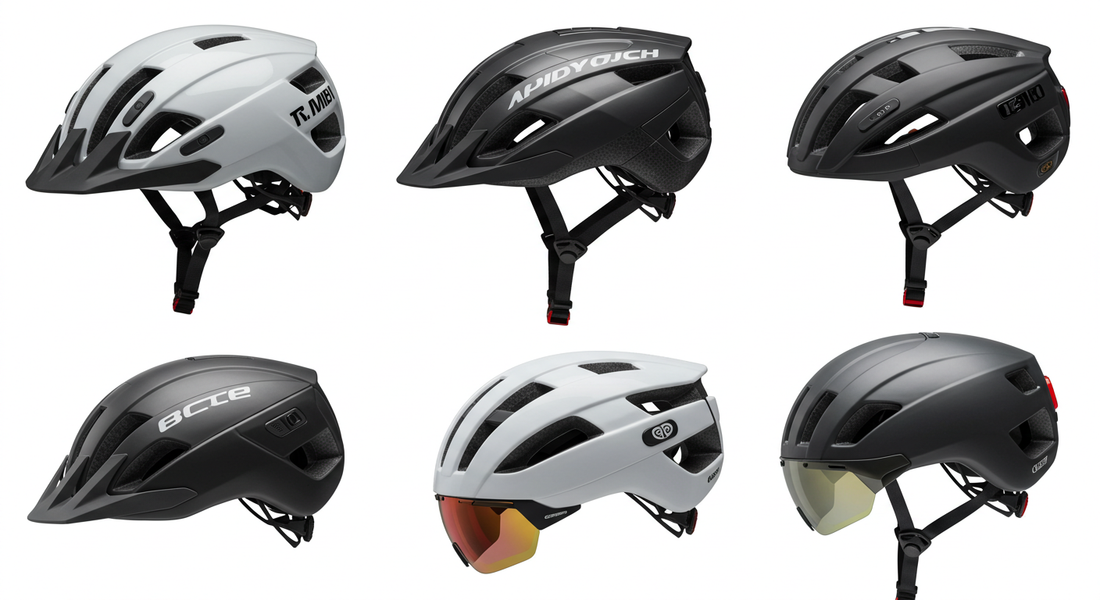Bike helmets are important for safe riding, but not all bicycle helmet types are identical. There are various bike helmet styles, each intended to work best for multiple purposes. For instance, mountain bike helmets are quite different from road bike helmets or those designed for commuting and e-bike riding.
Some types of helmets are even certified to guard you in physical activities other than cycling, like skateboarding or inline skating. First, explore different types of helmets and the respective features that make them exceptional. Then, you can pick the right one for how you love to ride. Keep reading and learning more about modern bike helmets: road, mountain, and commuter. Let’s delve deep into it!
Road vs. Mountain vs. Commuter
There are different types of helmets for bikes. Each is designed for various environments and riding styles. Road helmets are lightweight and aerodynamic. Mountain bike helmets provide more protection, especially around the sides and back of the head. Commuter helmets prioritize riders’ visibility and comfort. Different types of helmets.
Road Helmets:
A "road bike helmet" is one of the helmet types designed specially for road cycling. It is usually aerodynamic, lightweight, and well-ventilated. Road helmets prefer rider comfort and speed rather than rear head coverage. Each material used to construct a helmet matters most in its usage and performance. To learn in-depth, explore our guide about the materials used in making helmets.
The helmet's inner liner is made of expanded polystyrene (EPS) foam and the outer shell of plastic, often polycarbonate. The outer shell manages impact forces, while the EPS foam material cushions the head and absorbs impact energy. These helmets incorporate MIPS technology to ensure your safety. This will manage rotational energy in case of an accident. Get the right fit and enjoy safe and ventilated riding.
Mountain Bike Helmets:
Mountain Bike Helmets are best for trail excursions and off-road rides. These tough helmets are usually made of a durable ABS material. They have a thicker shell than other helmets. The helmet shape is also intended to provide more head coverage around the sides and back. Its shell comes down lower for additional protection if you face a sudden fall on the trail.
The mountain bike helmet has fewer vents, but the large vent size allows for cooling and better airflow, even at slower speeds. Its large visor deflects overhanging tree branches and helps shield you from the rain and sun. It also helps optimize an ideal range of vision, even when descending trails or climbing, even when the sun sets or rises.
Commuter Helmets:
Commuter Helmets are perfect for daily use, riding to school or work. They prefer sleek and stylish design. Several helmets have a small integrated visor, while others may contain a larger removable visor for more protection from the rain and sun. They usually feature limited vents, allowing for more soft padding material inside to improve comfort. Some of these helmets include additional pads of varying thickness to assist in fine-tuning your fit.
Visibility is significant while cycling in and around traffic, especially in low light. Commuter helmets mostly feature reflective material or integrated lights to help you be seen. It's a great idea. The right-fit helmet also makes a great difference. If you want to know how to choose the right size and fit for a bike helmet, we’ve got you covered with our helmet adjustment and fit guide.
Specialty Helmets
Speciality helmets are designed for specific activities, including e-bikes and skateboarding.
- E-bike Helmets:
- Electric bike helmets have features like camera mounts or integrated lights to improve practicality and visibility for riders.
- Skate Helmets:
- The multi-sport helmet is designed for skateboarding. Its thicker foam liners provide more coverage around the sides and back of the head.
Features & Use Cases
- The ventilation feature of cycling helmets makes them the best, especially in hot weather areas. Cyclists feel comfortable in aerated helmets.
- You can snugly fit your helmet with adjustable straps. These fit systems provide a comfortable and secure helmet placement.
- The Multi-Directional Impact Protection System (MIPS) lowers rotational force on the head in angled impacts.
- Helmets are also known as safety gear. Please make sure that your helmet meets strict safety standards.
- A bike helmet with visors protects from the rain and sun, especially for mountain cyclists.
- Choose helmets with integrated Lights or reflectors. They will maximize your visibility in low-light conditions.
Style Trends
- For efficiency and speed on the road, I prefer the aerodynamic shapes of helmets.
- Incorporate bold colours and patterns for visibility and personal style.
- Urban riders and commuters usually love minimalist helmet designs.
Understand how Falconer compares to other helmet types in our Types of Cycling Helmets article.
Conclusion
The best cycling helmet suits your riding style, safety needs, and surrounding weather or environment. So, pick the right one that satisfies all your purposes. Consider the fit, features, and safety certifications while choosing a helmet for your next ride. If you want to learn more, have a look at the introduction to cycling helmets.
